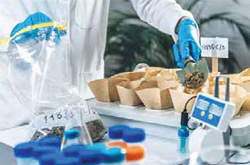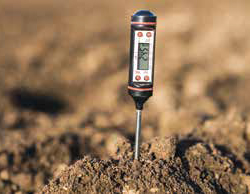 Different issues need to be implemented and calculated. Subsequently the fertilizer tanks are calculated
Different issues need to be implemented and calculated. Subsequently the fertilizer tanks are calculated
Crop analyses
Analyses of the crop gives information about the nutrients needed for growth. Analyses can be made by drying the complete plant. When all the water is out of the plant, the nutrients in the plant can be checked. Every crop has its own balance of nutrients. Plant analyses per crop are executed by the research station.
Root environment
To find out how to get the nutrients in the right composition into the plant, you need to know what to offer the plant direct in the root environment. This is determined by the characteristics of the roots absorbing nutrients. Since all crops have their own root system, the characteristics per crop are different. The research station has selected the right nutrient composition in the root environment for the different crops.
Substrate
The characteristics of the substrates determines how near and in what concentrations the nutrients are to the roots. Rockwool and peat have different qualities. The standard nutrient solution for tomatoes grown on rockwool differs from tomatoes grown on peat although the same nutrients in the same composition needed in the tomato.
Nutrient solution in the substrate
The centre of fertilizing is the nutrient solution in the substrate. The requirements of the composition of the nutrient solution in the substrate depends on the crop and the used substrate. Per crop and per substrate the research station gives advises. The grower has to strive after the advised nutrient solution in the substrate for an optimal production. Those figures are called the “strive figures”. Analyses of frequent taken samples out of the substrate are necessary to check the nutrient solution in the substrate. Having the right composition of the nutrient solution in the substrate also means the root environment is okay and you have got the optimal circumstances for production.
Standard nutrient solution  The composition of the irrigation solution is created to get the right nutrient solution in the substrate. This is per crop and per grow medium (substrate) indicated by the “standard nutrient solution”. The differences between the solution in the substrate and the irrigation solution are clear. For instance the EC of in the substrate is (much) higher than the EC of the irrigation solution and the composition of both solutions are different. The two solutions are more similar if having small rockwool slabs and high drain percentages.
The composition of the irrigation solution is created to get the right nutrient solution in the substrate. This is per crop and per grow medium (substrate) indicated by the “standard nutrient solution”. The differences between the solution in the substrate and the irrigation solution are clear. For instance the EC of in the substrate is (much) higher than the EC of the irrigation solution and the composition of both solutions are different. The two solutions are more similar if having small rockwool slabs and high drain percentages.
Water quality Before calculating what fertilizers to put in the A and B tank don’t forget the “clean water” already can contain nutrients. Those nutrients can be left out of the fertilization plan. You have to deduct for the “water quality”. For example: well water contains Calcium, a nutrient for the plant. Generally the plant needs more than available in the (clean) water. Less Calcium need to be added to the (clean) water to get the standard nutrient solution.
Fertilizer tanks Finally you can calculate the needed amount of fertilizers in the fertilizer tanks to create the standard nutrient solution. The fertilizer tanks are concentrated 100 times more than the standard nutrient solution. Suppose the concentration Calcium in the standard nutrient solution is 4 mmol/l and the “clean” water already contains 1 mmol/l Calcium, 3 mmol/l Calcium need to be added. Because the concentration in the fertilizer tanks is 100 times, 300 mmol/l Calcium still has to be solved into the fertilizer tank.


